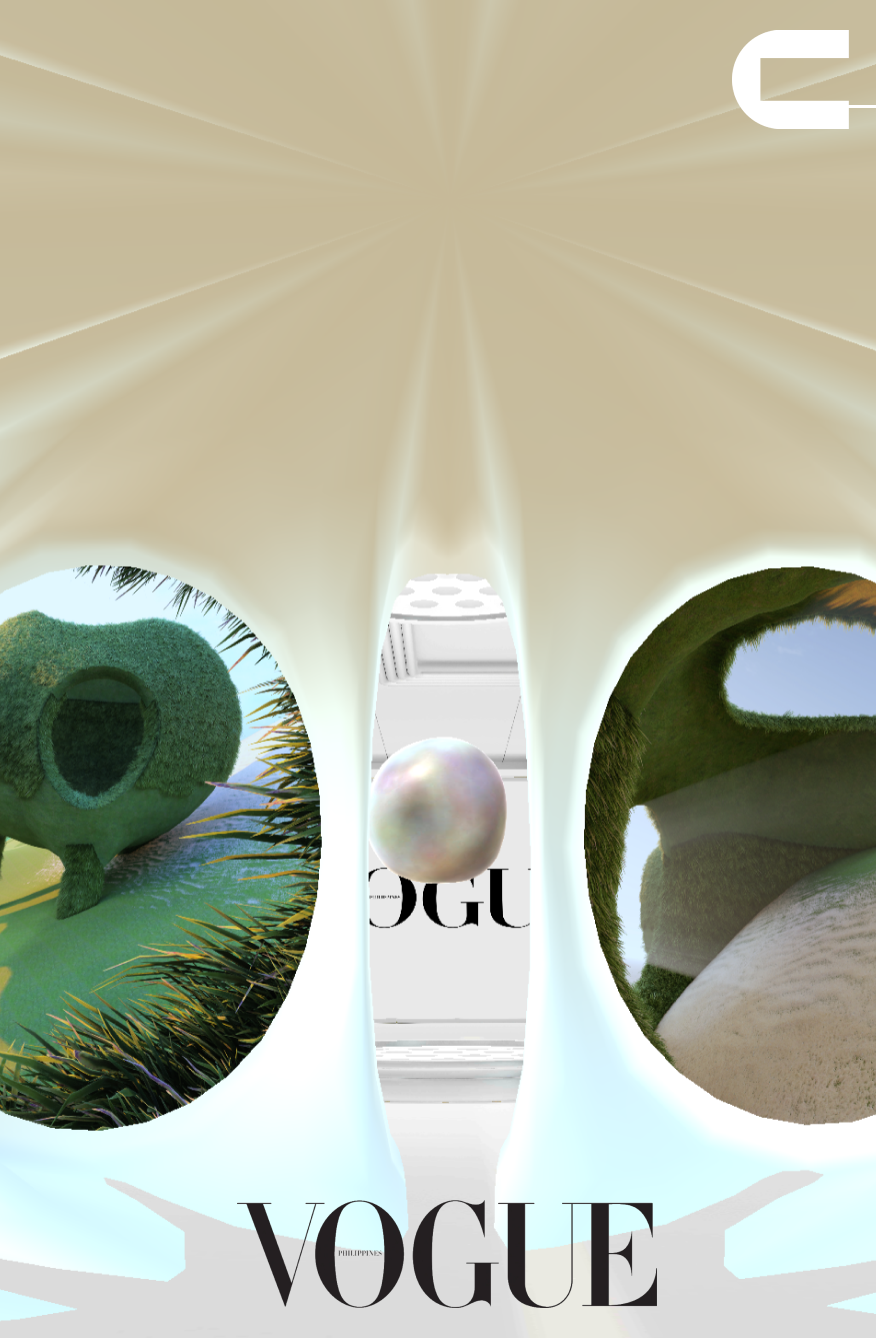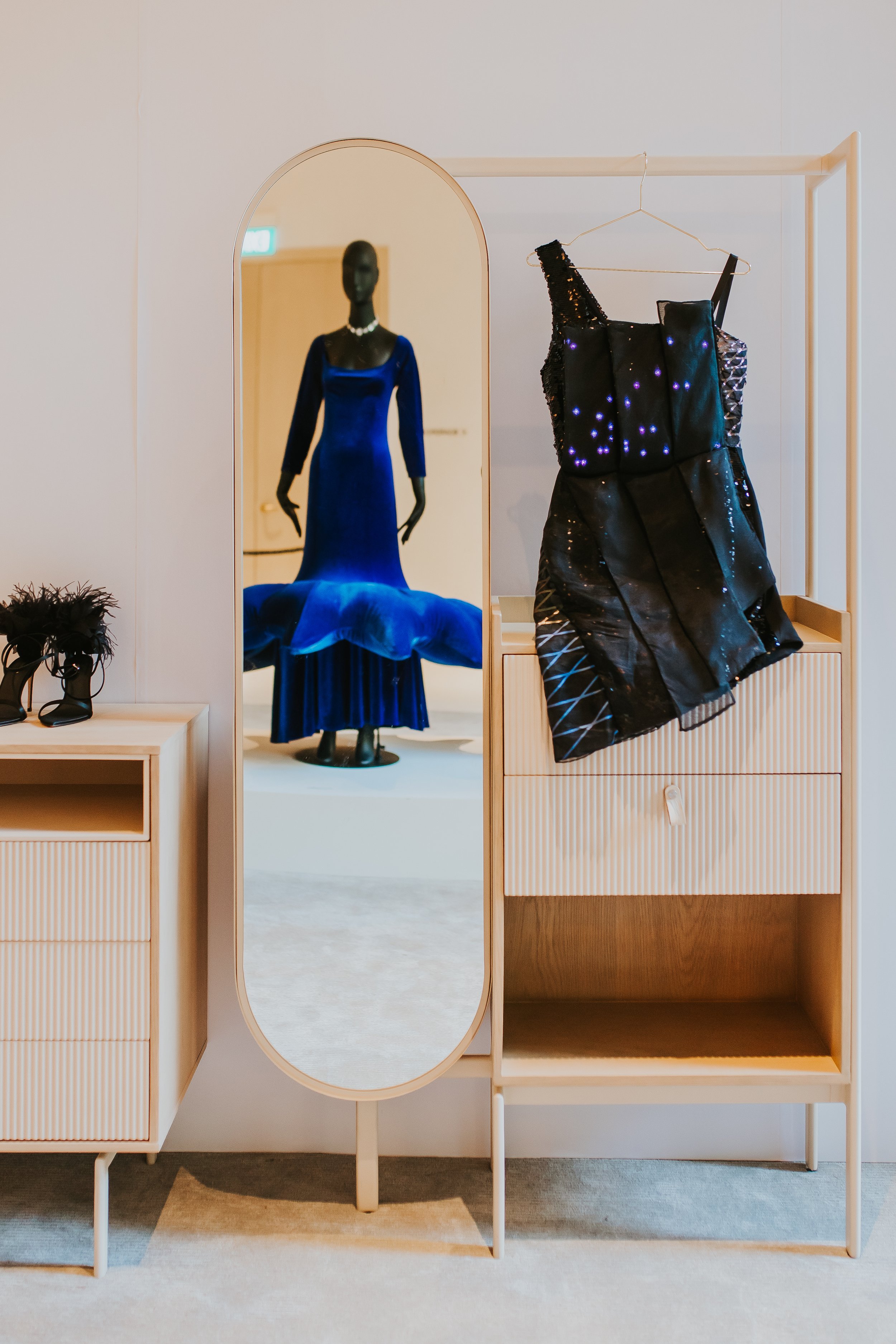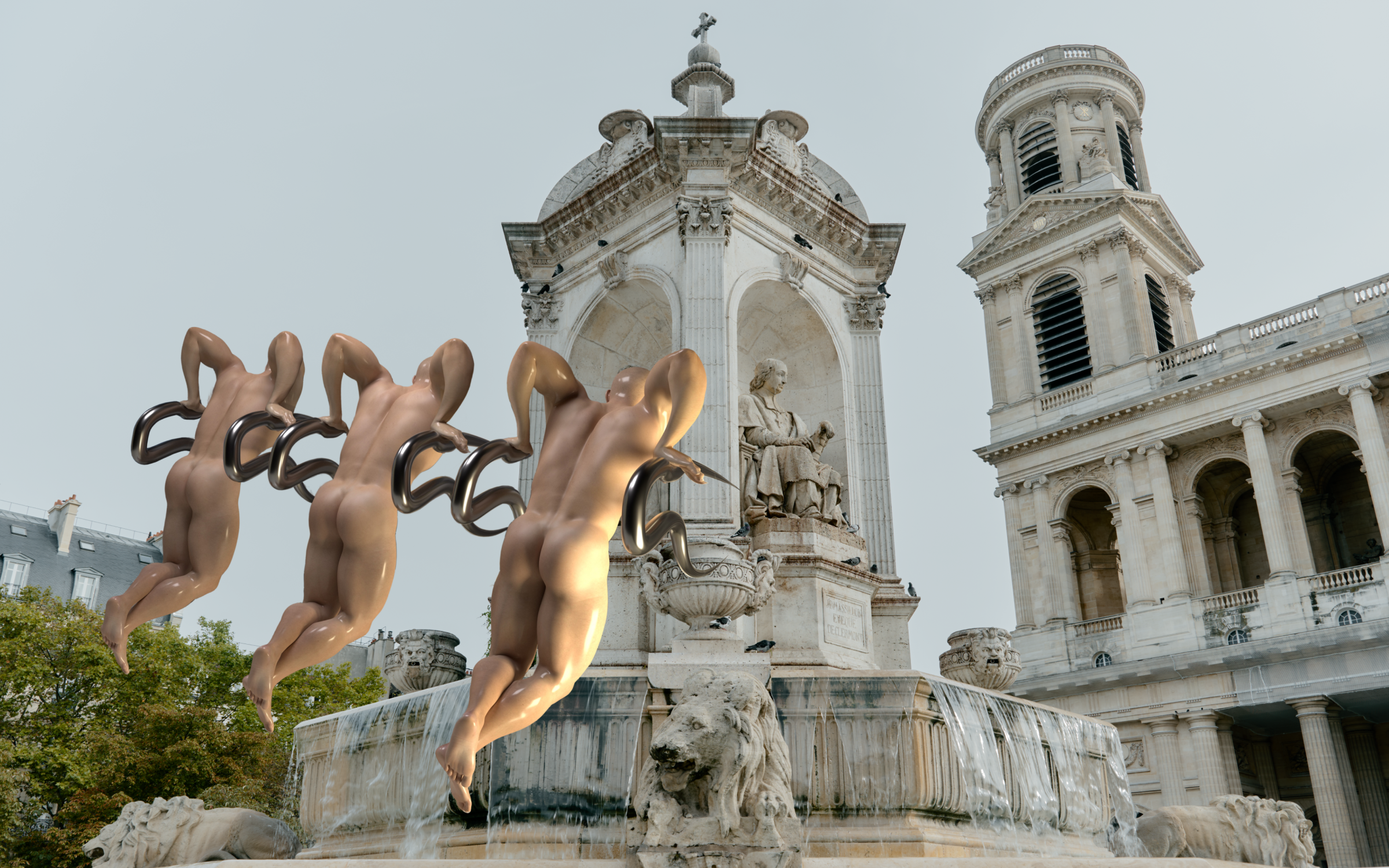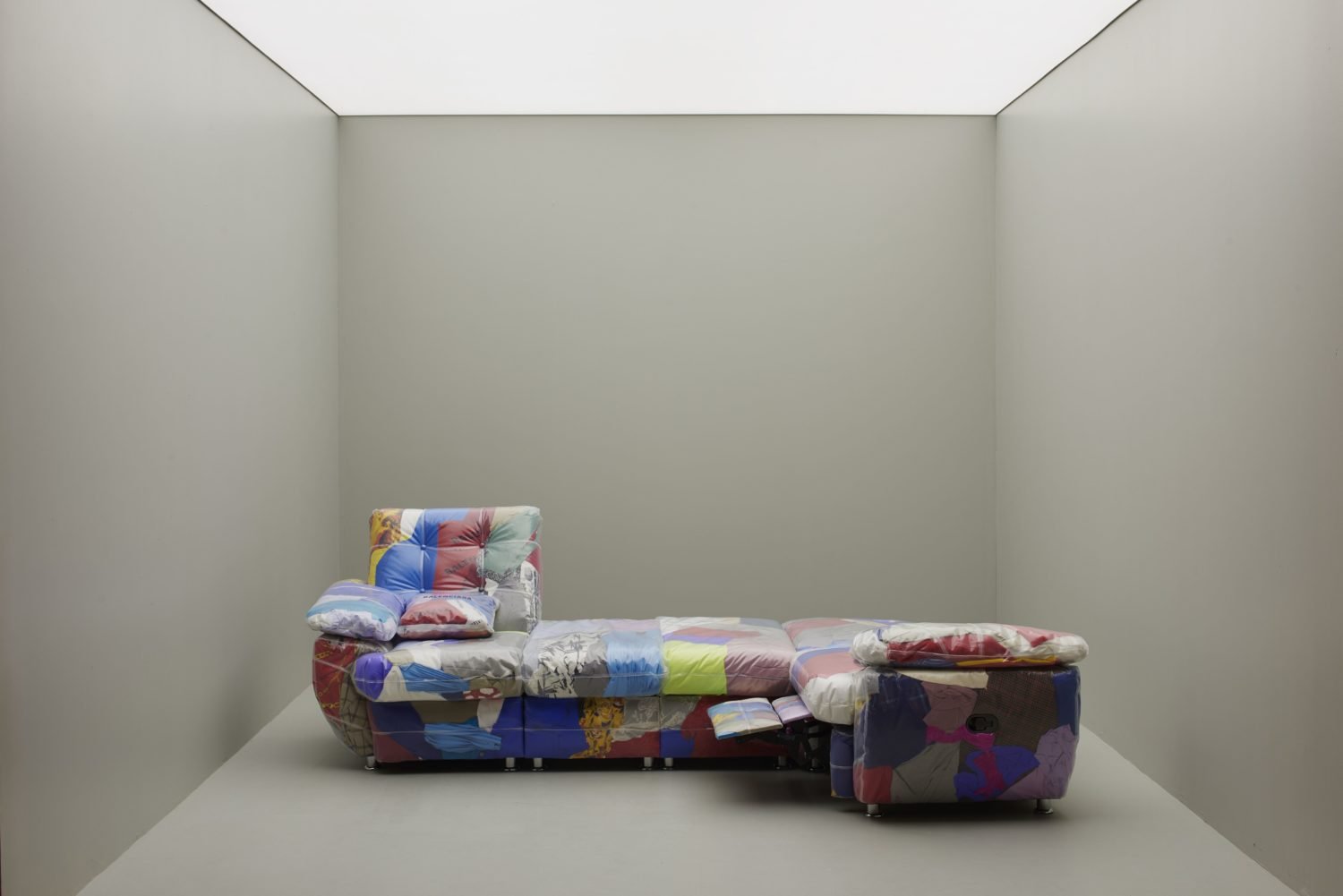Lablaco’s CFS HUB Returns – Meet The 2022 Class of Science and Fashion Catalysts Leading Web3 Innovation, Digitization, and Circularity
The catalysts premiere exclusively in the SPIN Metaverse on 8 December.
PAIGE SILVERIA
FASHION / SCIENCE
18 November
Lablaco’s CFS HUB Returns – Meet The 2022 Class of Science and Fashion Catalysts Leading Web3 Innovation, Digitization, and Circularity
The catalysts premiere exclusively in the SPIN Metaverse on 8 December and for the first time, IRL, with an immersive installation at Galeries Lafayette Champs-Élysées, early next year.
As part of CFS Summit 2022, lablaco announces the science innovators, fashion designers, and partners for this year’s CFS HUB.
CFS HUB is a playground for boundary-breaking innovation. The platform curates artists, solutions, and creators, and provides a space to accelerate the transition toward a digitized circular fashion system. Every year, CFS discovers and curates bold innovators and designers who are providing better ways to design, produce, communicate, and sell, shining the light on these changemakers during the annual CFS Summit, globally.
For its fourth annual launch, 8 – 11 December 2022,CFS Summit 2022 — the world’s largest annual VR gathering dedicated to luxury fashion, culture, and technology — brings forward designers with a strong vision for the phygital future to feature at CFS HUB. From using digital twins to replace physical prototypes, to designing inside VR, the selected talents understand the value of next-generation digitization to help solve the industry’s physical environmental issues. The CFS HUB Fashion Catalysts are MLLN, Dhruv Kapoor, Karoline Vitto, Raquel de Carvalho, SCRY, 8IGB Community Clothing, Chu Suwannapha, Wilsonkaki, bettter, and Published by.
The CFS HUB Science Catalysts are embracing science as a method for retail evolution. This group of 14 companies is leveraging digital technologies to improve production processes with digital previews, made to order, material science and AI scanning for made to measure, and to reinvent consumption with product timeline transparency, AR visualizations and direct-to-avatar try-ons. The CFS HUB Science Catalysts include EOS, YOU MAWO, Heartdub, Hey! Fashion by Eileen Fisher Foundation, PlatformE, THE REMADE, SPIN Connect, FibreTrace, circular.fashion, Dapper Labs, Polybion, Colorifix, PYRATEX, and Worn Again.
CFS HUB will also host a series of NFT galleries featuring Phygital NFT art and fashion from ISKO, Vogue Philippines, and Fondazione Sozzani.
ISKO, a century-old leading global textile company, will showcase garments from their new Ctrl-Z line. Referencing the “going back” command used on keyboards, ISKO’s new approach to material science, Ctrl-Z, offers denim out of entirely regenerated cellulose and GRS-certified recycled (cotton and polyester) fibers. The result is superior-quality denim, identical to traditionally produced constructions, yet more durable and sustainable.
For their gallery space, Vogue Philippines will be presenting a sneak peak of “Paraiso,” their first metaverse fashion editorial from the December/January issue. The visuals feature avatars created by Ivan Medrano, wearing various iterations of the terno — a traditional Filipino dress — reimagined by a selection of designers, and digitized by lablaco and DressX. Set in a digital bukid (field) imagined by Biaca Carague, the backdrop brings to virtual life, the lush landscapes of the Philippines.
Following the success of the recent release of the digitization of Vogue Italia’s Editor-in-Chief, Franca Sozzani’s couture archive, SPIN and Fondazione Sozzani will again collaborate on the presentation of the phygital garments for this year’s summit. The partnership displays the practicality and utility of Phygital NFTs and blockchain beyond hype. Due to its decentralized blockchain foundation, SPIN creates a transparent and secure avenue to trade, own, and trace the phygital garments in perpetuity. This establishes a new circular product life cycle, shifting the user experience from consumption to ownership of garments, and re-writing the possibilities of retail and resale.
CFS HUB is supported by Luxury Innovation Partner Kering, and their Material Innovation Lab, which, created in 2013, is dedicated to the sourcing of sustainable materials and fabrics. Through MIL, Kering supports CFS Hub Designers with the knowledge of new materials development. Our Industry Partner, Modem, provides working tools and professional information sources, dedicated to those who operate in the fields of fashion and design. Modem is supporting CFS HUB Fashion Catalysts by connecting them with the world of fashion through international showrooms and platforms. Our Retail Partner, Galeries Lafayette Champs-Élysées is located at 60 avenue des Champs-Elysées in Paris since 2019. The Galeries Lafayette Champs-Elysées store aims to offer its Parisian, French and international visitors a completely new retail model, in line with new forms of consumption. With the largest retail spaces of the avenue, this 6,500 sq.m. concept presents an inspiring and surprising product selection as well as exclusive collaborations and events, to provide its clients with a unique shopping experience amplified by architecture and digital innovations. Additionally, Galeries Lafayette Champs-Élysées will support CFS HUB Fashion Catalysts and Science Catalysts with a Web3 circular retail activation.
Galeries Lafayette Champs-Élysées Store View
CFS HUB will premiere at both the digital twin of the Grand Palais Éphémère in the SPIN metaverse, as well as IRL via the first meta-retail experience with Europe’s largest luxury retail group, Galeries Lafayette, at their most iconic store on Champs-Élysées. The activation will take over the whole of Galeries Lafayette’s atrium area with creative installations and immersive extended reality (XR) experiences, 4 – 26 January, 2023.
CFS and Galeries Lafayette Champs-Elysées will collaborate on piloting sustainable and circular IoT (Internet of Things) products, which will be available to explore and purchase both physically and digitally in the form of phygital NFTs via augmented reality (AR) and virtual reality (VR) technologies. All purchases will be accessible using cryptocurrency with Currency Partner Crypto.com, the world’s fastest-growing platform of its kind.
With the application of SPIN, customers can discover each product’s timeline, which is authentically traced on blockchain and connected via their exclusive IoT label printer. The technology prints unique QR-code labels that are sewn onto each garment at manufacturing level. Using any smartphone, customers can easily scan the code to visualize the item's journey, impact, and ownership via AR and VR (with Meta Quest headsets), and receive digital ownership upon purchase.
A series of talks will be hosted IRL in the atrium of Galeries Lafayette Champs-Elysées, featuring a curated group of changemakers and creative pioneers in art, fashion, technology, and music, with the purpose of educating and creating awareness on the future possibilities in tech and the circular economy. Additionally, a program to meet the creators will be presented in VR, for all participants to speak with inventors behind the products. This unique experience will demonstrate a new industry standard for the future of retail, as it amplifies the augmented product experience for the next generation of sustainable products.
THE WEB3 HUB TO FASHION SCIENCE AND CULTURE
THE WEB3 HUB TO FASHION SCIENCE AND CULTURE
NEXT ARTICLES
Meet Raquel de Carvalho, The Rising Queen of Knitwear
CFS Hub Catalyst Raquel de Carvalho talks to us about embracing sustainability as a growing brand.
PAIGE SILVERIA
FASHION
22 NOVEMBER
Meet Raquel de Carvalho, The Rising Queen of Knitwear
CFS Hub Catalyst Raquel de Carvalho talks to us about embracing sustainability as a growing brand.
There are a myriad ways for designers to improve towards circularity today, from digital prototypes and VR showrooms, to yarn derived from food waste and rental options. Each year the CFS Hub focuses on 10 independent brands who are keenly focused on the new frontier in sustainability and partner them with 10 technology innovators for mentorship and collaboration. Assessing new ways to improve upon each step of the product cycle, from inception to end of use, the 10 pairings will be showcasing their groundbreaking solutions at the #CFS22 Innovation Hub with unique opportunities to continue partnerships into the future.
For this year’s round, we’ve selected a handful of participants ahead of the summit for a Q&A to discuss their brand’s inception, process, and circular goals. First up is Sao Paulo-born, London-based designer, Raquel de Carvalho whose eponymously named label merges hand-crafted knitwear with sustainability-focused technology. On our call, we chatted about the contest that changed her trajectory, challenges young designers face, and what footwear is actually ideal in the metaverse.
So your brand is headquartered in London? What were the deciding factors for why you decided to be based there?
I have been here for three years now. I came to study at the London College of Fashion. After finishing my postgraduate course, I wanted to have some work experience and stay a bit longer. I’ve always seen London as a great place for experimentation and exploration. The brand also works with a small team in Brazil; all the artisanal work is produced there. But most of the design happens here in London. Of course it’s not easy at all to have my studio here. It’s very expensive and sometimes I feel like an outsider. But you also have so many opportunities to explore your creative side that it feels right to remain right now.
I feel like in New York, where I was based for over a decade, there’s a similar struggle of cost of living over the real sense of community there within creative industries. People continue to see the justification for the sacrifice.
Yeah, with the community, you know that everyone is going through the same thing. I was in Brazil recently and I was doing some work there. And it’s a different environment. As a Brazilian it’s of course easier for me to do everything there. I have family and friends and the environment I already know. It’s definitely challenging to be here, but I also know that I have different opportunities to exercise my creativity here. I’ll stay as long as it makes sense. Once I feel like it’s time to go somewhere else, I will.
How did you get started in design?
I did my BA in fashion design in Brazil first. At that time I wasn’t particularly interested in knitwear. Then I took a training program for young designers in Italy. It was the first time that I was out of Brazil and the first contact I had with knitwear, collaborating with Italian companies. I just fell in love and decided that that was what I was going to do. I started working with some brands and I got into fashion education teaching, which is something that I’m very passionate about.
And somehow I always knew that I would launch my brand eventually. But I didn’t have much confidence in myself. It felt terrifying, thinking about showing my vision of fashion to the world. I was kind of postponing it. By the end of 2020, an opportunity came for me to apply for a competition organized by Pitti Immagine and the Consorzio Promozione Filati in Italy. And it was this great thing because I could create the project during lockdown. I got together with a company here in London. I was able to try this idea that I had had for such a long time and show it to an important, professional audience, Pitti Filati. And I won. So that was life-changing for me.
What are you working on currently?
I’ve been researching and experimenting with some techniques for my upcoming collection. I don’t have an idea exactly about when I’m going to launch it. I’m still trying to figure it out: the structure of launching a collection, how to manage production. Most of my pieces are made to order, they’re one-offs. So that’s the big challenge, how to respond to the demand. I’ve also been experimenting with 3D digital scan prototyping, which is something I wasn't able to do for the previous collection. But it’s something that I’m excited about.
The hardest part is the production. For many of the pieces I had no idea that people would actually want them. Most of the manufacturers have minimum quantities and I didn’t want to overproduce items just to meet the requirements. That’s really what I’m focusing on, managing this transition from made-to-order pieces to working with things that go beyond the essence of my design aesthetics. But also thinking about distribution, quality control … this is really overwhelming!
How do you incorporate circularity and sustainability when designing — materials, processes, etc?
The yarns and other materials that I choose play an important role. Everything starts from there. I always try to make really well-informed decisions when it comes to this part of the process. Low-impact materials, things with a certification label confirming less energy and water waste, no deforestation in the production, renewable sources, etc.
But of course it’s not all the time that I’m able to make the choices that I want, being a small brand. But I really try to keep in mind that every piece and every collection is an opportunity to do better. There were a lot of choices I made for the previous collection that I’m going to continue with. For instance, reducing the use of synthetic fibers and choosing more renewable materials. I also try to manage the one-off pieces, reusing, upcycling previous samples, and deadstock yarn. I have so many materials that I’ve accumulated over time — since my BA! I’ve been trying to create small projects in order to use these materials, instead of buying new ones.
What are your goals for over the course of the next five years, circularity-wise?
For the future, I want to do 100% digital prototyping. I don’t want to waste time or materials on samples. I also want to implement a way for my customers to track the journey of each garment. There’s a specific knitwear software, but the license is really expensive so I wasn’t able to work with it for the past collection. I really believe it’ll be the future of fashion so I really want to work with it. Of course now that I’m participating in the CFS project, I’ll be able to explore phygital NFTs and think about ways to connect this to my customers. Additionally, I’ve been really into experimenting with the rental model for my pieces. I really want to be able to create less, while still having more people access the garments.
How would you describe the customer you're designing for?
Well I’d have to mention my close friend and muse, Augusto Cascales .He’s a queer performance artist, writer and filmmaker. I think he synthesizes the spirit of my customers. It’s all about embodying your freedom and using fashion as a way to perform and dress up, and not being stuck in gender and stereotypes. Bring fun, extravagance to dressing. Explore your body and sexuality.
What's your view on the state of fashion today?
We have a long way to go towards sustainability and circularity. But somehow I feel hopeful, because there are so many people out there doing great things and trying to make a difference. At the same time I feel there’s a huge pressure on young designers, students, and individuals to show that they’re going to save the fashion industry, while those in charge, the big companies and the government, aren’t taking effective action. In the end I guess the fashion industry is just a reflection of society right now. I don’t think we can have a healthy industry if society is facing so many issues like poverty, inequality, and corruption. I just hope that we’re going to continue to do what we can with the forces we have and we’ll continue to put pressure on the right people, those who have the money and power, to actually make some change.
Okay now for some fun questions. Is a digital human more comfortable in a Tom Sachs x NikeCraft Mars or Balenciaga Croc?
Can I say neither of them? I think it would be Havaianas, for sure. I’m Brazilian. So it’s flip-flops; they’re the best thing.
Would you invest $100k on a Crocodile Birkin or a Bored Ape NFT?
A Bored Ape NFT, because I would never buy a crocodile Birkin — ever. If I had the money, just no. I mean, crocodile? What they do is too insane to speak about it. It doesn’t make sense at all.
Give me an example of something that you would do or create in the metaverse that you wouldn’t IRL?
Well, I love metallic and shiny things. That's something I’d love to explore in my designs. But obviously because of the polyester and synthetic fibers, I'm not always able to work with those materials. So I would definitely do everything metallic and shiny, the whole collection.
Should more companies be like Pataganoia?
I think what they do is great and the brand seems very genuinely focused on sustainability. At the same time, I don’t think everyone should be exactly like them. Everyone needs to find their own way with the resources they have, to make things right. With the position they’re in, they’re able to do things that most brands and people aren’t. So each individual needs to find the balance for themselves within the industry between people, planet, design, etc.
the web3 hub to fashion sciene and culture
the web3 hub to fashion sciene and culture
NEXT ARTICLES
Five Metaverse Creators You Need To Know
Tap these creators for your next luxury product or space.
PAIGE SILVERIA
FASHION
20 NOVEMBER
Five Metaverse Creators You Need To Know
Tap these creators for your next luxury product or space.
Editor’s take
Web3 has officially taken over the industry as this generation’s pivotal platform — following the emergence of e-commerce and social media in the early ’00s. From Kering’s new CEO appointee of Gucci Vault and Metaverse Ventures, the launch of web3 hub Balmain Thread during PFW, Carolina Herrera selling a digital dress for $5,000, and everyone from Tommy Hilfiger to Vans buying spaces on Roblox (where more than 50M users are active daily), it’s indisputable that major brands investing themselves in web3 is paramount to survival — and installing a CEO-led team is well-advised. However once firmly in the realm of meta, there’s always the constant trial to break through the noise and dominate headlines and feeds. The right digital design collaborators can keep a brand competitive and culturally relevant.
With this in mind, here are our five favorite boundary-pushing digital designers:
Crosby Studios
Known for his monochromatic, yet vibrant industrial aesthetic, Russian-born, New York- and Paris-based artist and designer Harry Nuriev of Crosby Studios creates both physical and digital interiors, design objects and garments. The latest output from Nuriev was a VR-driven pop-up retail space with Zero10. Presented during NYFW, the temp space featured five virtual clothing designs by Crosby Studios, which guests were able to try on in AR using a special QR code. Others he’s collaborated with on digital projects include Valentino, Nike, Hypebeast and Vogue. It’s rumored that currently, Nuriev is working on a design game in The Sandbox where players can create their own interiors.
Max Arnautov
Digital artist and designer, Max Arnautov has been gaining recognition for his fake collaborations with Kanye’s Yeezy and Demna’s Balenciaga. What started as an experimental Instagram account, has morphed into something of a calling card for the Russian artist. Regularly modeling his original digital garments and accessories, inspired by the aforementioned designers, the rendering of a face-helmet version of the Yeezy foam shoes especially had many in the metaverse vying for the physical manifestation. It can only be a matter of time before this artist is picked up for a proper partnership.
Actual Objects
Since opening shop in 2018 with producer Nick Vernet, Rick and Claire Farin of Los Angeles-based experimental creative studio Actual Objects have worked with major brands, magazines and artists including Marine Serre, Hood by Air, Vogue, Ssense, Travis Scott, and Trippie Redd to digitize their visions. With a truly radical and particularly transgressive approach, the AO team’s work is almost immediately recognizable. Despite their differing backgrounds — Claire’s in drawing and painting and Rick’s in architecture and music — the two collaborated for several years before the formal outfit was established. Now they specialize in digitizing not only famous faces like Grimes’, but also whole metaworlds, using the platform Unreal Engine, to exact their unique uncanny photorealism.
Freeka Tet
Freeka Tet is a Paris-born, multi-city-based experimental artist and designer whose broad practice includes coding, prosthetics, animatronics, hacking, video plunderphonics and more. Inspired by Internet culture and the sometimes irrational social behavior within, his work critically, yet playfully reflects what he sees. Collaborations include multiple Collina Strada campaigns, including the animatronics for FW22 and Collina Land video game with GucciFest for SS21; an animated NFT with the cult musician Aphex Twin; the digitally manipulated stage video for Machine Gun Kelly and Travis Barker’s performance at the VMAs in 2021. Other clients include Childish Gambino, Chromeo, Google, Prada, Nike and The Whitney.
Zyva Studio
Zyva Studio is a Paris-based architecture firm, founded by artist and designer Anthony Authié. An active participant in the exploration of both physical and virtual architecture, since 2019, he’s since further developed his concept of “trans-design,” bridging the two worlds and their occupants. Inspired by a broad range of influences from reality TV to Manga to body builders, his work’s quickly recognizable by its vibrant colors and almost cartoon-like, unreal presence. His most recent project, commissioned by Elle Décoration France for their Paris Design Week project D3SIGN CAPSULE, was an NFT collaboration with fellow designer, Sam Buckley. The two pulled from their shared appreciation for computer games to create a digital chair, whose many Tetris-inspired, multi-hued parts can be rearranged to the owner’s liking.
Cover Image: Crosby Studio/ Balenciaga
the web 3 hub to fashion sciene and culture
the web 3 hub to fashion sciene and culture




































